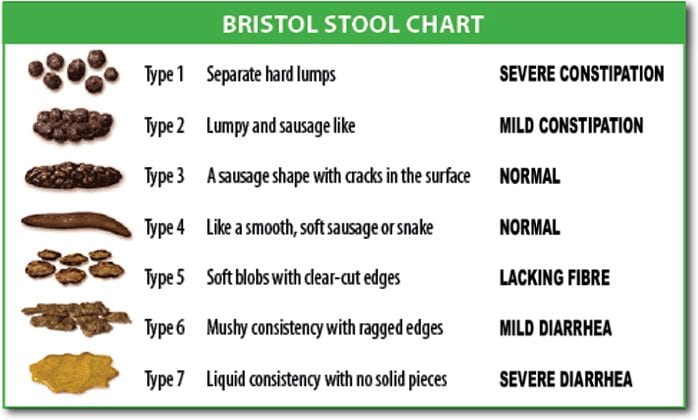It’s been said before, but it bears repeating: everybody poops. I know sometimes fecal discussions can make people uncomfortable, but excretion is really just a function of life (you should just be glad human digestive systems work in one direction). And because poop is a function of life, it also can be a matter of life or death.
That sounds a bit much, but it’s true.
In the Civil War, diarrhea, often caused by dysentery, killed more soldiers than war wounds did. Today, diarrhea kills over 2,100 children per day – that’s why it’s so important to have access to clean water and, you guessed it, sanitation. In the end, it all comes back to poop.

Doesn’t look like this Civil War era encampment has much in the way of sanitation
Photo Credit: Wikimedia Commons
Here in the States, we don’t talk that much about poop because it’s gross. But given that it’s something we all have in common, and that its proper functioning is vital to our health, we thought we’d do a dive into what exactly your poop can say about your body.
First thing’s first: color.
Brown

Photo Credit: Pixabay
Normal, healthy fecal matter can be pretty much and shade of brown, or even green.
Poop gets its brown color from bile – a secretion from your liver that is useful in digesting fats. Bile starts out as a sort of yellowy-green (if you’ve ever had a time when you were vomiting intensely, you may have seen bile before). As it moves through your digestive system, it goes through various chemical changes that turn it more of a brown color, which gets added to by the dead blood cells and bacteria your waste picks up as it travels.
Normal poop may be lighter or darker brown, depending on what you’ve eaten or how much bile is in it. The faster your poop moves through your digestive system, the less time bile has to collect in it, which is why diarrhea may not always be brown, but rather green.
Green

Photo Credit: Pixabay
Although it can be a little alarming, green poop is also usually pretty much normal.
If you eat a lot of green veggies, particularly leafy greens, they may color your poop green. The high level of chlorophyll in some vegetables (the same chemical that gives them their green color) affects the color in your poop, but don’t worry – a nice foresty hue to your poo is no reason to stop eating your healthy veg. Poop also often turns green if you consume a bunch of food coloring, including green, purple, blue and black colored dyes.
Shamrock Frappuccino anyone?
Usually your poop will resume its (more) normal brown color soon later, assuming the change in your diet isn’t permanent.
As we mentioned before, the one thing to really watch out for is green diarrhea – but it’s not the color that’s the issue. If you have diarrhea for more than a day or two, you should go see a doctor.
Other Colors

Photo Credit: Pixabay
There are a few less normal colors that can be signs of serious problems in your poop.
If you’re pooping red, that can be a sign of 1) having recently eaten beets (this can be seriously alarming for people who don’t regularly eat beets) or a bunch of red food coloring or 2) bleeding in your lower digestive tract. This can have all sorts of serious causes, so if your poop is bright red, go to a doctor.
If your poop is tarry and black, that is also an indication of bleeding in your digestive tract, but the bleed is likely located higher up. Again, black poop can be caused by eating some foods (black licorice, medicines containing bismuth, iron supplements, or maybe even blueberries), but if you can’t think of anything you’ve eaten that would be coloring your feces, go to the doctor.
Pale tan, or chalky white can also be caused by medicines containing bismuth, but it can more seriously mean that not enough bile is getting into your poop. That can be a sign of some serious problems, so get this checked out.
If your poop is yellow, greasy and particularly bad smelling, it likely contains an unusual amount of fat. Yellow poop is normal in breastfed newborns, but not in adults – if it happens pretty regularly, get it checked out.
Shape
The shape of your poop can also tell you about your health. In fact, there’s a chart called the Bristol Stool Chart that used in diagnostic medicine to determine general health from fecal shape.

Photo Credit: Cabot Health, Bristol Stool Chart, CC BY-SA 3.0
As you can see, the shape of your poop mostly let’s you know if you’re constipated, normal, or have diarrhea – but once you know those things, you can take the steps needed to keep your digestion in tip top shape, whether that’s water and fiber, or a trip to the doctor.
Last thing: if your poop smells especially bad, like really bad, like, you-notice-how-bad-it-smells type bad, that can also indicate a medical problem. If it lasts more than a few days, go to a doctor.
Speaking of, this article is not a substitute for a medical professional. You’ve now got some idea of how your poop reflects your health, but if something weird is going on with your poop, you should ABSOLUTELY go to a doctor. It is always much better to be safe than sorry.






